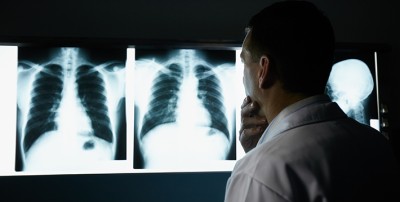
As a pulmonologist, I appreciate it when my patients tell me concerns about their lung health. It allows me to help them through what could be a difficult time.
One question I frequently receive is whether a patient is at risk for lung cancer. When this comes up, we talk about factors that may put a person at increased risk, such as a family history of lung cancer, smoking or exposure to radon gas or asbestos fibers.
In its early stages, lung cancer often doesn’t have any symptoms. In some cases, the only way to detect early-stage lung cancer is through screening. This is important, as early-stage lung cancer can be cured. At a more advanced stage, a patient may develop a persistent cough; shortness of breath; wheezing; may feel very fatigued and may cough up blood. However lacking symptoms at onset, lung cancer has an opportunity to grow and spread. That’s why, in the U.S., lung cancer is the leading cause of cancer death for both men and women.
How screening can help
Screening for lung cancer, using a low-dose computed tomography (CT) scan, is now supported by a recommendation from the U.S. Preventive Services Task Force (USPSTF). The task force reviewed the large National Lung Screening Trial and several other lung cancer screening studies and then determined that early screening is valuable, especially for people who meet certain guidelines related to their risk for developing lung cancer.
Who is high risk?
If one of my patients has three or more of the following factors, he or she is considered at high risk for developing lung cancer:
- Between the ages of 55 and 80 (Centers for Medicare and Medicaid Services places this range at 55 to 77 years)
- Has a 30 pack-year smoking history (which means smoking one pack per day for 30 years; two packs per day for 15 years, etc)
- Currently smokes or quit smoking within the past 15 years
- Has other risk factors such as:
- Exposure to radon or occupational hazards such as asbestos
- Family history of lung cancer
- Personal history of pulmonary fibrosis or chronic obstructive lung disease
Is screening covered?
Through the Affordable Care Act, Medicare Part B now covers the cost of one annual lung cancer screening for people who meet the guidelines.
What if I need screening?
If my patient is considered at high risk and agrees to be screened, I will write a prescription for a low-dose CT scan. (A written prescription, often called a script, is required.) The low-dose CT scan is typically completed in one breath-hold and exposes the patient to less radiation than a traditional CT scan of the chest.
If no lung cancer is detected, then each year we will review the patient’s risk factors and determine if a lung cancer screening should be repeated in the future or if they no longer are considered at high-risk.
Time to speak up
I encourage you to speak with your primary care provider or other specialists about your risk for lung cancer, particularly if three or more of the risk factors listed above pertain to you. Early detection helps patients start lung cancer treatment sooner, and may mean the disease is not only more treatable, in some cases, it may also be curable.
